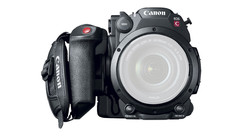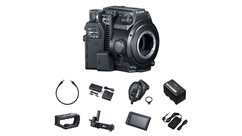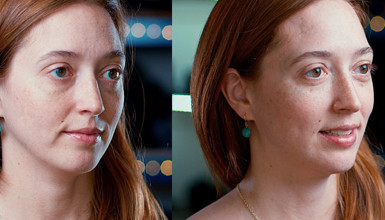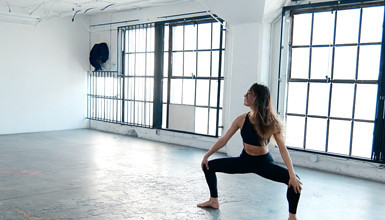To test this, I wrote a two person scene that takes place in a bar. We shot it first with three cameras, then two cameras, and finally covered the whole scene with a single camera.
Setup time
Overall, setup time was about the same. For multi-camera work, you do all your setup before you start shooting, which can cost you momentum but does let you shoot quickly once you’re going. This front heavy prep time lends itself to a prelight if you have that opportunity. This would allow you to step on set on shoot day and knock out a lot of coverage very quickly.
Cost
The more cameras you're shooting with at once, the more the scene will cost to shoot. You have to rent the cameras and grip for each unit, and hire more operators, ACs and focus pullers. Even if you have a set of lenses, you may need a second set for a two camera shoot if you want to be on the same focal length in matching reverses. Bigger crews will also dictate the locations you can fit into, and the larger the location, the more they typically cost.
Speed
Multi-camera wins hands down for getting a scene in the can. This is why TV shows that shoot on prelit, multi-camera sets can regularly get 8-12 pages done a day. Meanwhile, a single camera feature film would shoot 3-5 pages in the same time. But single camera coverage is the reason that cinema looks so "cinematic," and not like TV (though there are certainly some notable exceptions to this).
Quality
Single camera shooting gives a better image, hands down. You can get the lights closer and dress to frame. You can refine the image with small touches – like the eye light we used in single camera setup. With a single camera you can also go wider, since with the multi-camera equivalent you would end up seeing other cameras. There is also better sound in the single shoot, simply because you can get the boom mic closer.
Actors' Performances
I found multi is harder to direct because of the multiple elements to keep track of. Which monitor should I look at? At the end of the take, which actor should I talk to first? I also found multicam tires out actors quicker because they always need to be "on" but don’t know if any particular take is going to make it into the film.
In my experience, actors enjoy the spotlight, and will raise their performance when focus of the director and camera is on them alone.
Summary
I was surprised how much better single camera was – for lighting, for performance, and to assemble into a finished scene. It made me much more comfortable as a director than looking at three displays at once. I gave the most notes during the single camera shoots and also got the best performances.
Having said that, there are many scenarios when multicamera makes more sense. These include:
- When people are improvising
- When actors aren't as experienced or when you're using child actors who can't repeat their blocking
- When you want real scares or reactions from actors
- With stunt elements – allowing lots of options and footage to cut between
- If you're outdoors with variable environment – such as if the light is changing fast like it does during magic hour
In the end, it comes down to personal preference. I encourage you to experiment and find a method that best suits your style of filmmaking. I learned a lot from this exercise. I hope you did too.
Watch the three versions of the scene at the end of the video, or click the links to go directly to one style.
Single Camera – 10:26
Two Camera – 12:32
Three Camera – 14:28
About Rubidium Wu
Over the past 2 decades, Rubidium as directed and produced numerous projects from art documentaries to commercials for Nintendo and Sony PlayStation. His Kickstarter-funded web-series Silent City gained over a million views and was featured by the Wall Street Journal and the New York Post. His first feature, the thriller Brooklyn Tide, shot with the original Canon C100, is available on Amazon Prime. Rubidium explores the techniques and technologies that continue to transform filmmaking on his YouTube channel, Crimson Engine.















AbelCine encourages comments on our blog posts, as long as they are relevant and respectful in tone. To further professional dialog, we strongly encourage the use of real names. We reserve the right to remove any comments that violate our comment policy.
AbelCine publishes this blog as a free educational resource, and anyone may read the discussions posted here. However, if you want to join the conversation, please log in or register on our site.
We use Disqus to manage comments on this blog. If you already have a Disqus account registered under the same email as your AbelCine account, you will automatically be logged in when you sign in to our site. If not, please create a free account with Disqus using the same email as your AbelCine account.